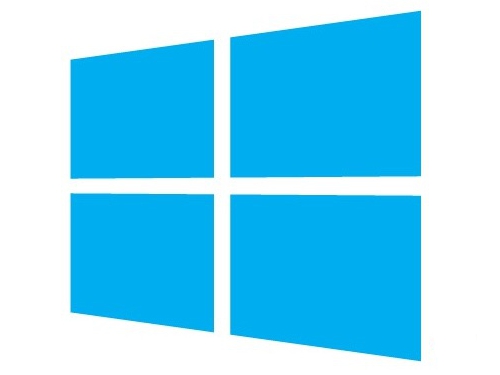Rumor: Windows 9 Going RTM in Q4 2014
Russian leaker WZOR reports that some news outlets already have Windows 9 "Threshold" as of Tuesday but are not allowed to publish reviews until September 30, the day Microsoft intends to reveal the upcoming OS to the public. This press version will be updated during Microsoft's press event to unlock a number of features previously not provided.
The report claims that Microsoft plans to ease up on its activation policies, allowing customers to re-install the platform an unlimited number of times on the same hardware. The company also plans to increase the number of times customers can re-activate Windows 9, allowing consumers to transfer their copy to a new system or the same system with a new hard drive.
Previous reports from unnamed sources indicated that Microsoft will offer Windows 9 free to customers still running Windows 7 and Windows 8. However, we presumed that Microsoft would instead use the same Windows 8 scheme for Windows 9: charge $40 to those on the latest version (Windows 8.1) and full price for consumers on all older versions (Windows 8, 7, Vista, XP). As before, the discount would only last until January.
A separate report regarding Windows 9 indicates that Microsoft has inserted a new anti-piracy system to help reduce the number of pirated copies of Windows. This seemingly goes against rumors that Windows 9 will be a free upgrade -- why would you beef up anti-piracy features in software that will be freely handed out to everyone? Remember, Windows 8.1 with Bing isn't free to OEMs; the software merely has a reduced price.
That all said, the Windows 9 consumer/technical preview is expected to be released on September 30. The platform will then go RTM before the end of the year, and be made available as a retail product in April 2015. There's a good chance the company plans to remove the numbering system from the Windows brand, as seen with the recent Windows Phone leak.
Based on recent leaks, Windows 9 is expected to bring back the Start Menu and allow Modern UI "Start Screen" apps to run in a windowed mode on the desktop. The OS will supposedly boot into desktop mode if the platform doesn't detect a touch screen, and the Charms bar will likely be ripped out and replaced by a more functional PC Settings drop-down menu.
Cortana is also expected to play a big role in Windows 9, as will virtual desktops and a notifications center. ARM-based tablets running Windows RT won't have the desktop at all and will likely merge with Windows Phone by April 2015.
Get Tom's Hardware's best news and in-depth reviews, straight to your inbox.
Follow Kevin Parrish @exfileme. Follow us @tomshardware, on Facebook and on Google+.

Kevin Parrish has over a decade of experience as a writer, editor, and product tester. His work focused on computer hardware, networking equipment, smartphones, tablets, gaming consoles, and other internet-connected devices. His work has appeared in Tom's Hardware, Tom's Guide, Maximum PC, Digital Trends, Android Authority, How-To Geek, Lifewire, and others.
-
Urzu1000 I'll definitely be looking forward to trying this. I've been pleased with every version of Windows I've used. I liked 95, 98, XP, Vista, 7, and 8.Reply
Yeah, I liked Vista and 8. Sue me. -
junkeymonkey i'm sure Microsoft spent more time on all the crapware leaching to the os then they did on the os itself like as we seen from everything above XP . they need to release a os that's just a os and let me decide if I want or need all the extra gimmickware bloating things up . a streamlined fast stable os is all we need not a bunch of crap to weed through to just get to the osReply -
4ktv Hope Windows 9 is more stable than 8 and has better old software support like 7 does.Reply
Better be free for my 8.1 pro laptop or else I will have to say screwed my M$ again just like that buggy thing called vista that SP1 nor SP2 could fix. Ran a non-public dev build of windows 7 just to not deal with vistas BS anymore. (I knew a guy, he is retired now.)
I hope they also shoot for a microkernel OS again, because I think that's really the next step to really make the OS it's self better.
-
srap ReplyI'll definitely be looking forward to trying this. I've been pleased with every version of Windows I've used. I liked 95, 98, XP, Vista, 7, and 8.
There is nothing wrong with you liking those.
Yeah, I liked Vista and 8. Sue me.
The problem usually starts when Microsoft or other commenters try to tell me that I like it, or Microsoft acts as if I liked it. -
memadmax Ignoring the business sector, stubbornness, wanting to be like apple, and wanting to be part of a stupid fad... was what brought Win8 down...Reply
We shall see with 9.... -
junkeymonkey and has better old software support like 7 does. ??????Reply
this windows 7 don't support nothing like xp and vista did I got stuff that had no issues on xp and vista but to work with 7 it was a small hack jobs to do so -
4ktv Reply14195026 said:and has better old software support like 7 does. ??????
this windows 7 don't support nothing like xp and vista did I got stuff that had no issues on xp and vista but to work with 7 it was a small hack jobs to do so
XP yes and it was the best OS ever, vista maybe if it didn't blue screen so much even on SP2. Windows 7 is better than windows 8 at supporting older software by far and that was what I was commenting on. -
ohim ReplyI'll definitely be looking forward to trying this. I've been pleased with every version of Windows I've used. I liked 95, 98, XP, Vista, 7, and 8.
Don`t worry, i liked it also , i think Vista had the best visuals from all Windows releases, and i enjoy now how Win 8.1 works thou i would love to have WIn 8.1 with Vista`s visuals. Back in the day i had a pretty good computer to run Vista not like all those guys with 96 MB of Ram crying that Vista blows.
Yeah, I liked Vista and 8. Sue me.
-
junkeymonkey I guess its all so you need to buy new programs and not use old so the money keeps rolling in to them they remove certin core items to render older software useless I took parts of vista and xp and ''installed'' them into 7 where they were conveniently left out of 7 I just hate to think how many of my nice programs I would loose going to 8 or above .. its not like there free like with LinuxReply
